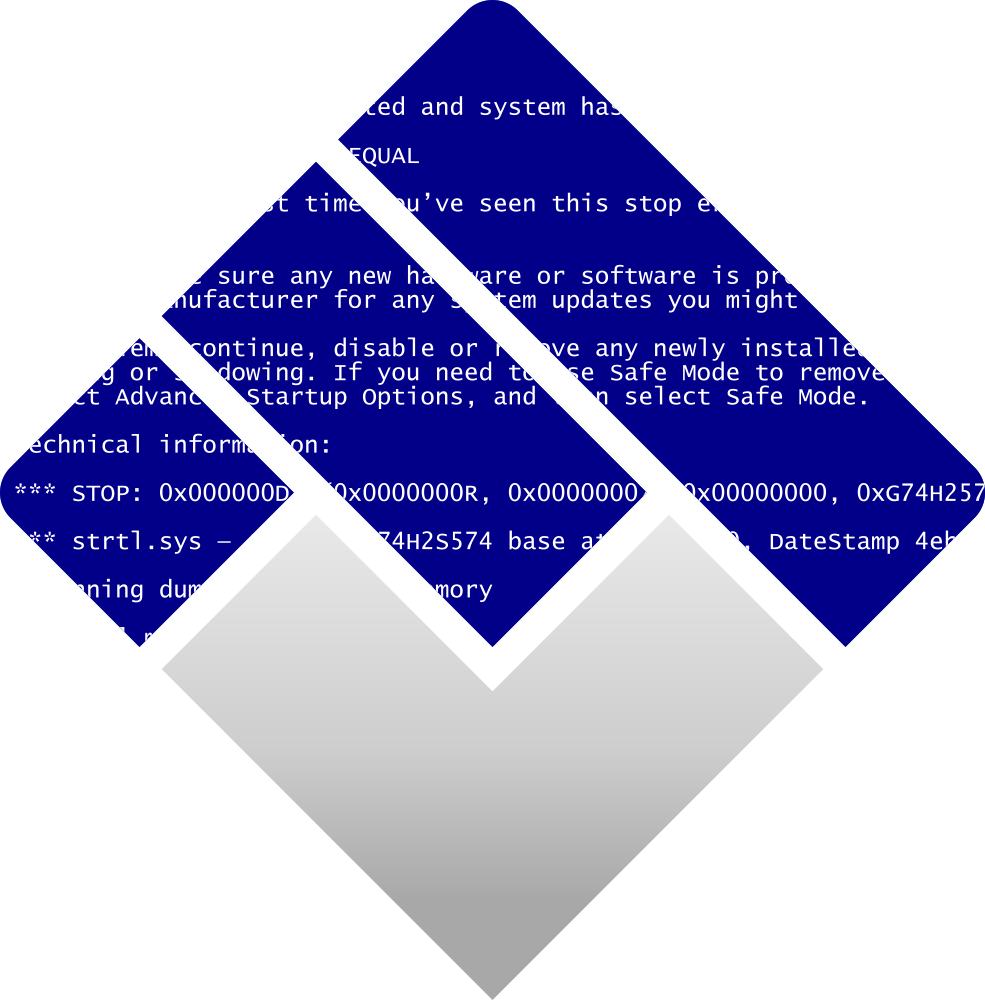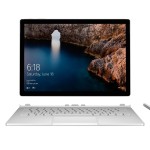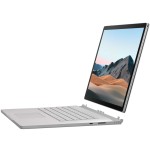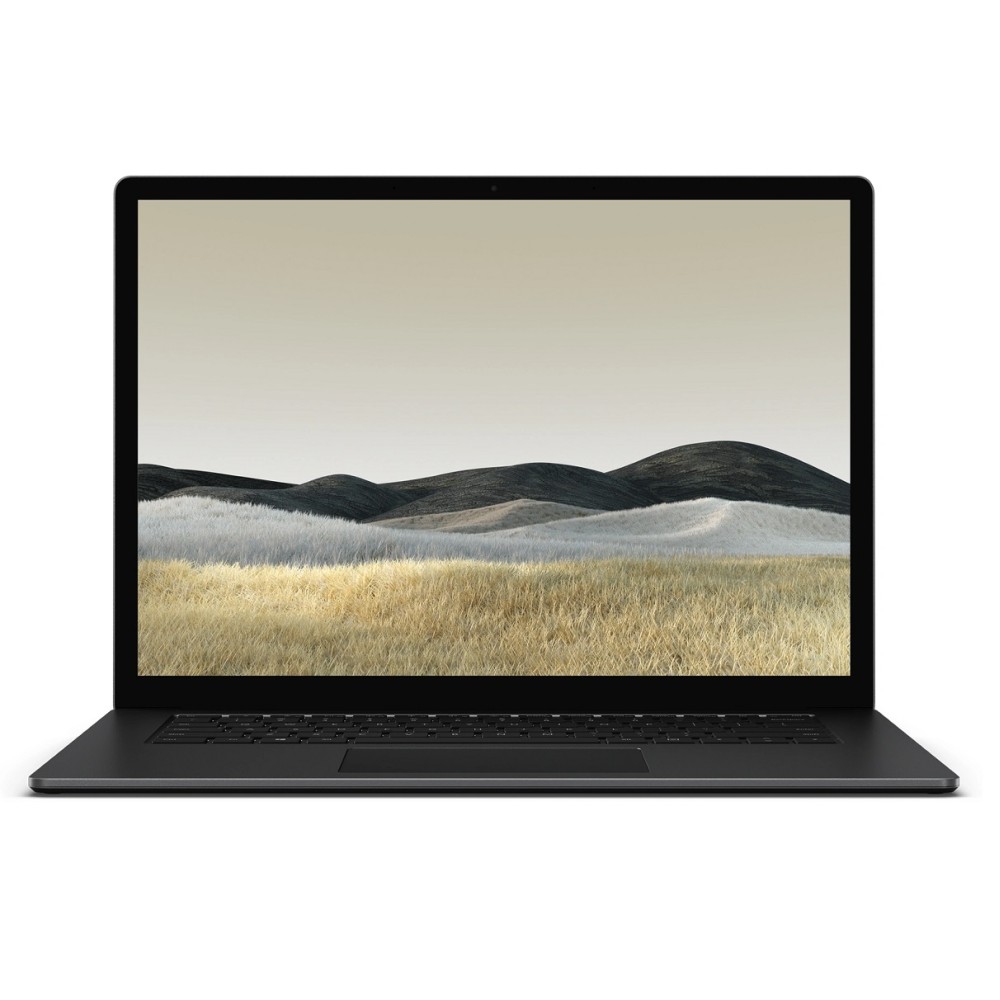
-1000x1000.jpg)
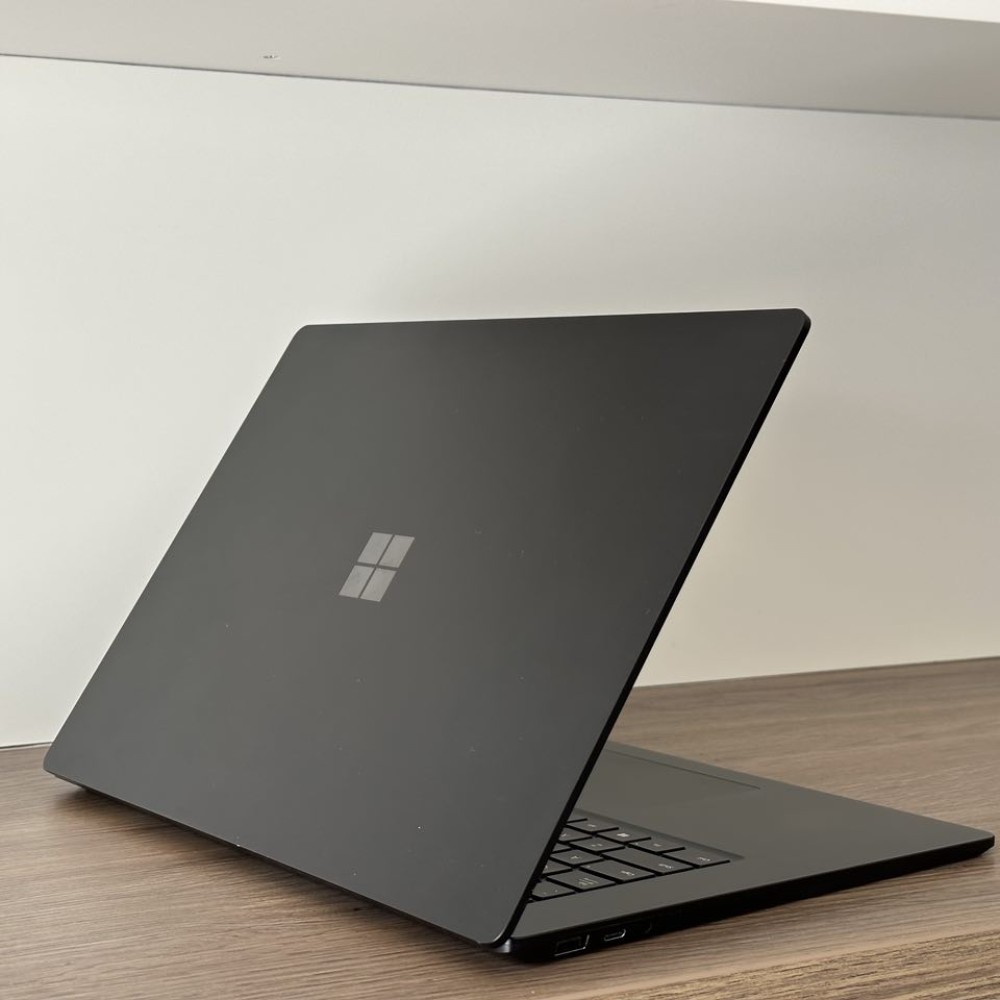
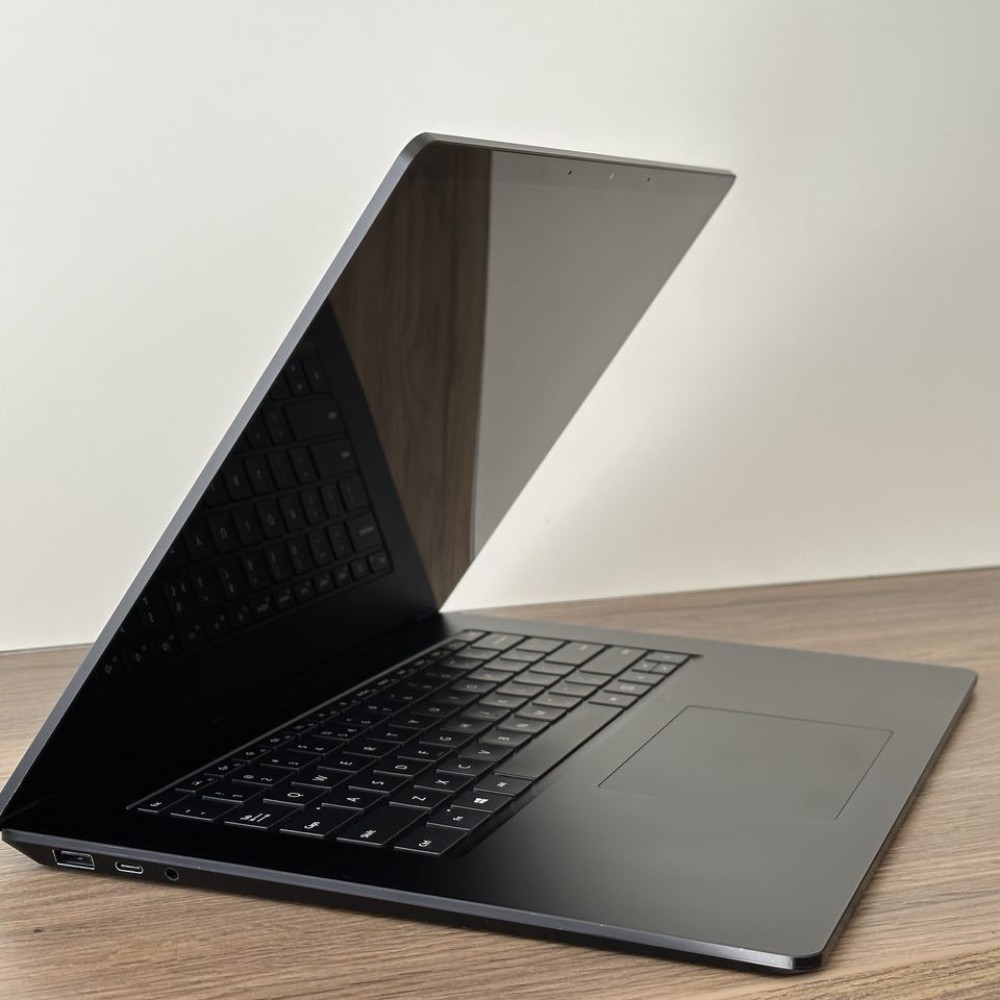
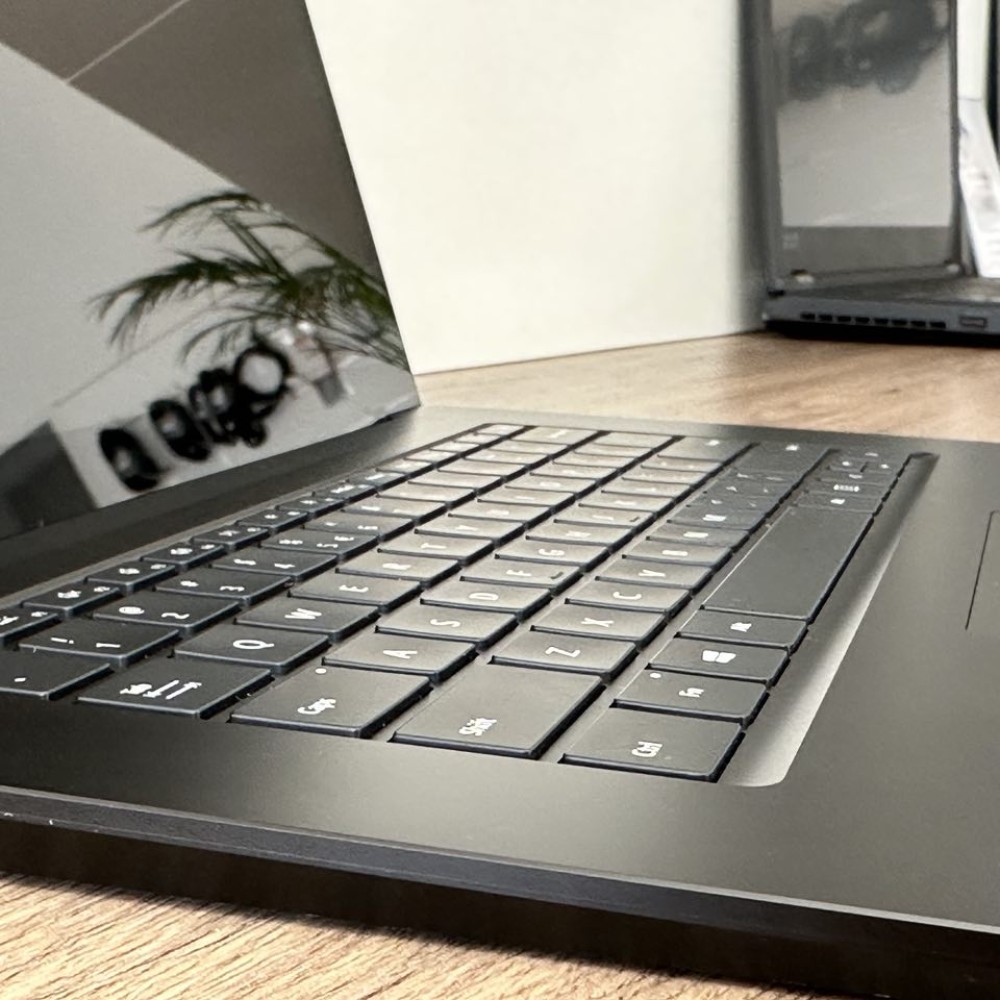
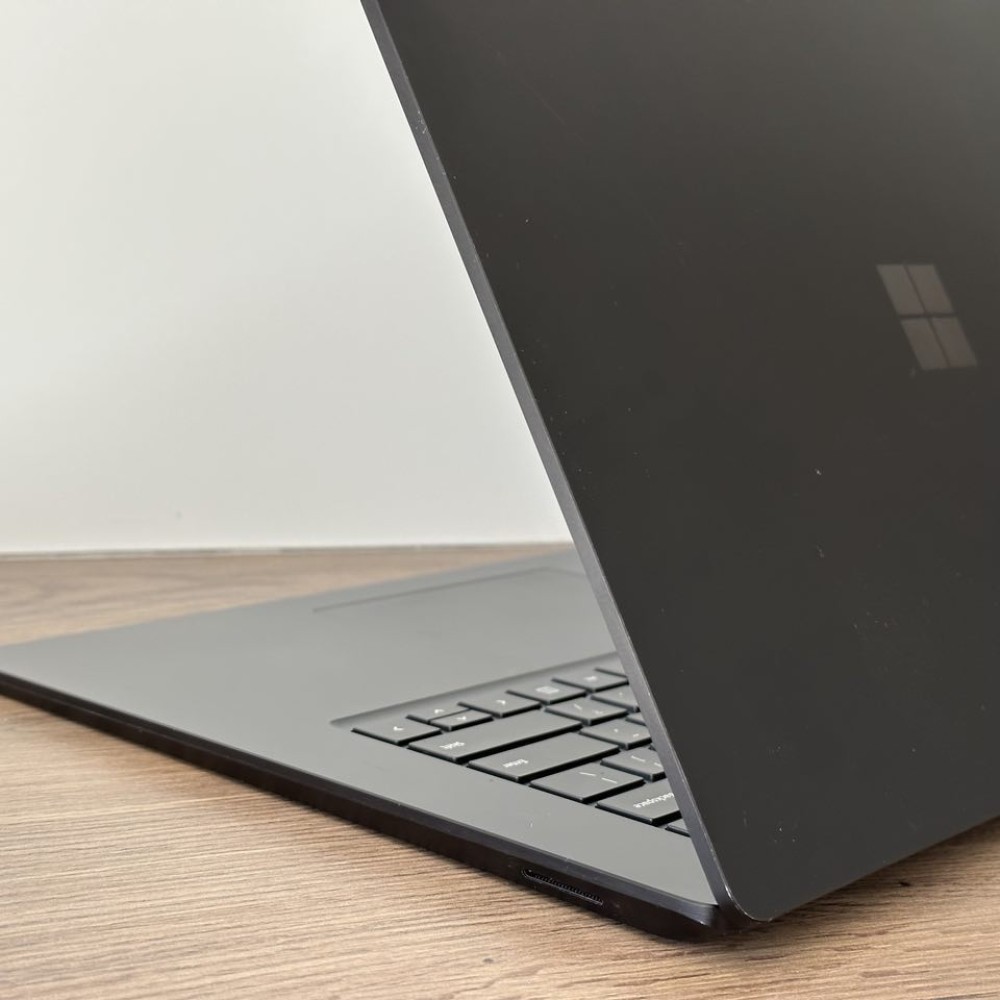

-80x80.jpg)




Dostępne opcje
More from this brand
Microsoft Surface Laptop 3
Laptopy poleasingowe klasy A i B+ to doskonała jakość w atrakcyjnej cenie!
Nasze laptopy pochodzą z serii Microsoft Surface Laptop 3 i są oferowane w niezwykle atrakcyjnej cenie. Pamiętajmy, że w momencie debiutu na rynku w latach 2020-2021, ich cena wynosiła 2050 €. Teraz masz okazję na niezwykłą jakość za znacznie mniej!
Gwarancja satysfakcji:
Każdy laptop przeszedł gruntowne testy, posiada legalne systemy operacyjne i jest gotowy do pracy. Dlatego też jesteśmy pewni, że zapewniamy 100% satysfakcji. Nasz zestaw zawiera laptopa, zasilacz, baterię oraz pisemną gwarancję na okres 12 miesięcy.
Gotowy do pracy:
Laptop jest wyposażony w system operacyjny Windows 11 Pro 64 bit w języku polskim oraz zestaw niezbędnych programów, takich jak LibreOffice, Kodeki, czy też antywirus Windows Defender.
Oszczędność i troska o środowisko:
Kupując laptopy poleasingowe, które zostały odnowione i przetestowane, nie tylko oszczędzasz pieniądze, ale także dbasz o środowisko naturalne. Nasze laptopy są tańsze nawet o 80% w porównaniu do pierwotnej ceny zakupu, zachowując jednocześnie wysoką jakość.
Gwarancja i wsparcie:
Oferujemy pisemną gwarancję na 12 miesięcy oraz gwarancję satysfakcji lub możliwość zwrotu pieniędzy w ciągu 7 dni. Po upływie okresu gwarancji, zapewniamy profesjonalny serwis realizowany przez firmę VILKO, która ma 30-letnie doświadczenie w naprawach sprzętu komputerowego i elektronicznego oraz dostęp do części zamiennych.
Wszystko to sprawia, że wybór laptopa poleasingowego to wybór ekonomiczny i ekologiczny, który zapewnia doskonałą jakość i wydajność.
| PODSTAWOWE INFORMACJE | |
| Marka | Microsoft |
| Model | Surface Laptop 3 |
| SYSTEM OPERACYJNY | |
| System Operacyjny | Windows 11 Pro |
| PROCESOR | |
| Seria Procesora | Intel Core i5 |
| Model Procesora | Intel Core i5-1035G7 |
| Ilość Rdzeni / Wątków | 4 / 8 |
| Taktowanie Procesora | 1,2GHz Turbo do 3,7GHz |
| Generacja Procesorów Intel | Gen 10 |
| PAMIĘĆ RAM | |
| Pamięć Operacyjna RAM | 8 GB DDR4 |
| Maksymalny rozmiar pamięci RAM | 8 GB DDR4 |
| DYSK TWARDY | |
| Dysk Twardy | SSD 256GB M.2 (NVMe) |
| VIDEO | |
| Grafika Zintegrowana | Intel Iris Plus |
| KOMUNIKACJA | |
| WLAN | 802.11a, 802.11b, 802.11g, Wi-Fi 4 (802.11n), Wi-Fi 5 (802.11ac) |
| Bluetooth | Bluetooth 5.0 |
| EKRAN | |
| Typ Ekranu | PixelSense™ Dotykowy |
| Rozmiar / Rozdzielczość Ekranu | 15" / 2496 x 1664 |
| MULTIMEDIA | |
| Karta Dźwiękowa | Dolby® Audio™ |
| Kamerka | 720p HD f2.0 front-facing Windows Hello face authentication camera |
| PORTY I ZŁĄCZA | |
| Porty USB | USB 3.2 (Gen1, 5Gb/s), USB 3.2 (Gen1, 5Gb/s) type-c |
| UKŁAD KLAWIATURY | |
| Klawiatura | QWERTY podświetlana |
| WAGA | |
| Waga | 1,54kg |
| STAN TECHNICZNY | |
| Stan Techniczny | Grade A |
| Stan ekranu | Grade A- |
| Stan wizualny | Grade A- |
| GWARANCJA | |
| Hardware | 12 miesięcy |
| Bateria | 3 miesiące |
| W ZESTAWIE | |
| Zasilacz | 45W |
| Bateria | Doo 11.5 godzin przy odtwarzaniu wideo |
Objaśnienie Specyfikacji produktu
Znajdziesz tutaj informacje które objaśnią wszystkie katalogi atrybutów/specyfikacji odpowiednio wszystkie grupy.
Jeżeli sprzęt nie posiada któregoś z wymienionego parametru oznacza to że sprzęt tego nie posiada.
Podstawowe Informacje
Marka - Producent sprzętu komputerowego,
Seria - Dana linia produkcyjna laptopa np. Zbook, Precision. Najłatwiej porównać to do mercedesów gdzie można podzielić je na klasy S,G,E....
Model - Konkretny model sprzętu komputerowego.
System Operacyjny
System operacyjny - Wersja systemu operacyjnego jaki jest wgrany w laptop / komputer.
Sprzedawany sprzęt komputerowy posiada zainstalowane sterowniki oraz podstawowe programy w tym pakiet biurowy Libre Office.
Procesor
Seria procesora - Rodzina procesora dana seria procesorów.
Najłatwiej wyjaśnić to na przykładzie, Intel posiada serie (od najwolniejszych do najszybszych): Atom, Celeron, Pentium, Core i3, Core i5 oraz Core i7, Xeon u konkurencji AMD w nowszej rodzinie Ryzan'a angologicznie jest Ryzen 3, Ryzen 5, Ryzen 7, Ryzen 9
Model procesora - Konkretna model procesora.
Ilość rdzeni / wątków
Rdzeń - Są to fizyczne, samodzielne jednostki obliczeniowe wewnątrz procesora, które wykonują zadania.
Wątek - Wątki są jednostkami wykonywania zadań wewnątrz rdzeni. Procesory z obsługą wielowątkowości mogą wykonywać więcej operacji na jednym rdzeniu, co przekłada się na lepszą wydajność w obsłudze wielu zadań równocześnie.
Taktowanie bazowe / turbo - częstotliwość pracy procesora, wyrażana w hercach (Hz). Określa ona szybkość zegara procesora, czyli ile operacji może wykonać w jednostce czasu. W nowych generacjach procesora każdy rdzeń może mieć inne taktowanie, informacje te trzeba sprawdzać bezpośrednio u producenta, na stronie jest podawana wartość turbo.
Bazowe - wartość nominalna podawana przez producenta
Turbo - pozwala procesorowi na zwiększenie swojej częstotliwości pracy ponad taktowanie bazowe, gdy zachodzi taka potrzeba. Mechanizm ten dostosowuje się do warunków obciążenia procesora, podnosząc tymczasowo jego częstotliwość, co pozwala na zwiększenie wydajności w momencie, gdy jest to wymagane.
Generacja procesora - Określenie kolejności rodziny procesorów np. procesor Intel i5-6200U to 6 Generacja a Intel i5-8250U to 8 generacja. Im wyższa generacja tym nowszy procesor
Pamięć RAM
Pamięć Operacyjna RAM - ilości dostępnej pamięci operacyjnej wyrażone w GB, jest to swojego rodzaju przestrzeń plików tymczasowych. Większa ilość pamięci RAM może poprawić wydajność systemu poprzez umożliwienie obsługi większej liczby programów jednocześnie lub bardziej wymagających aplikacji. określa konkretną technologię używaną w module pamięci RAM. Rodzaj pamięci RAM ma wpływ na przepustowość i wydajność systemu, a kompatybilność z płytą główną oraz procesorem jest istotna.
Dla laptopów o przeznaczeniu codziennym 8GB jest wystarczające. Jeżeli wykonujesz na nim pracę w różnych programach graficznych czy obszerne bazy danych zalecane jest większa ilość RAMu.
Maksymalny rozmiar pamięci RAM - maksymalna ilość pamięci RAM jaką może procesor obsłużyć.
Dysk twardy
Dysk twardy - Podawany w formacie SSD 256GB M.2 (NVMe) czyli następująco
[Rodzaj dysku] [Pojemność] [Wymiar] / [Interfejs]
Rodzaj dysku
1. SSD to dysk tkz. szybki i trwały zbudowany z kości pamięci chipu elektronicznego ,
2. HDD dysk mechaniczny, dane umieszczone są na talerzach obracane przez silnik z prędkościa 5400/7200 obr/min dane są odczytywane za pomocą przesuwającej się głowicy unoszącą się nad telerzami. Dane odczytywane za pomocą sił elektromagnetycznych.
3.SSHD połaczenie dwóch technologi lecz w głównej mierze jest to dysk HDD a pliki często używane są przenoszone do pamięci półprzewodnikowej.
Pojemność - pojemność dysku 1TB = 1024GB / 1000GB zależne od oznaczenie producenta dlatego dysk 1TB posiada tylko 931GB zamiast 1024GB gdyż zaokrąglają mniejszą jednostkę 1GB = 1024MB, 1MB = 1024KB a producenci idą na uproszenie stosując 1MB = 1000KB
Wymiar - fizyczna wielkość dysku
1. 2,5" - wymiary dysku to 69,85 mm x 100,50 mm korzystające najczęściej z interfejsu/złącza SATA
2. M.2 - wymiar dysku to 22mm na (30mm / 42mm/ 80mm / 100mm) korzystający z złącza M.2
Interfejs - Standard komunikacji
SATA - Prędkość interfejsu to 6Gb/s zapewniające przepustowość maksymalnie do 600MB/s, lecz zależy to od dysku
NVMe - wykorzystującą linię PCIe, najczęstszym ograniczeniem prędkością dysku jest sam dysk, przepustowość jaką są stanie osiągnąć nawet 2GB/s.
*Dysk SSD który ulega awarii najczęściej dane są tracone bezpowrotnie, wynika to z specyfiki działania.
**Dysk HDD dane są nanoszone fizycznie na talerze, specjalistyczne firmy są stanie odzyskać dane z poważnie uszkodzonych dysków lecz wiąże to się z kosztami, dlatego pamiętaj ZAWSZE RÓB KOPIE ZAPASOWĄ WAŻNYCH DANYCH na inne urządzenie albo w chmurze.
Dodatkowy dysk twardy - Dodatkowy dysk twardy wbudowany, oznaczenia jak powyżej.
Karta Graficzna
Grafika dedykowana - Model karty dedykowanej czyli fizycznie oddzielny chip na płycie głównej lub samodzielnej karcie graficznej o stosunkowo większej mocy obliczeniowej niż grafika zintegrowana co nie koniecznie sprawdza się w grafice serii Intel Irish .
Grafika zintegrowana - Procesor graficzny najczęściej scalony z procesorem, charakteryzuje się niższą wydajnością w porównaniu z grafiką dedykowaną, wyróżnić tutaj możemy jedynie Intel Irish Xe który niczym nie ustępuje grafikom dedykowanej z średniej półki.
Pamięć karty wideo - rodzaj pamięci używany przez kartę graficzną do przechowywania tymczasowych danych graficznych, takich jak tekstury, ramki obrazów i inne informacje niezbędne do renderowania grafiki na ekranie komputera.
Fortnite - FPS - Ilość FPS (ilość klatek na sekundę Fram-per-sec ) uzyskany przez daną kartę graficzną w grze Fortnite.
Komunikacja
Wi-Fi (WLAN) - Najprościej mówiąc jest to wbudowana sieć Wi-Fi w urządzenie, Wi-Fi posiada też różne standardy jak poniżej:
- Wi-Fi 6 (802.11ax): Najnowszy standard Wi-Fi, oferuje wyższą wydajność i szybkość transferu danych niż poprzednie wersje. Obsługuje sieci 2,4 GHz i 5 GHz oraz oferuje większą przepustowość, co pozwala na obsługę większej liczby urządzeń jednocześnie.
- Wi-Fi 5 (802.11ac): Jest to poprzedni standard, który również działa w pasmach 2,4 GHz i 5 GHz. Wi-Fi 5 oferuje szybsze prędkości niż starsze standardy, co umożliwia przesyłanie danych w wyższej jakości.
- Wi-Fi 4 (802.11n): To wcześniejszy standard, który obsługuje również pasma 2,4 GHz i 5 GHz. Wi-Fi 4 jest mniej wydajne od Wi-Fi 5 i Wi-Fi 6, oferując niższe prędkości transferu danych, ale nadal umożliwia połączenie z Internetem i podstawową komunikację bezprzewodową.
- Wi-Fi 3: Obsługuje tylko 2,4 GHz
Ethernet (LAN) - To sposób połączenia komputerów i urządzeń sieciowych za pomocą kabli. Jest to tradycyjna i stabilna metoda tworzenia sieci lokalnej, umożliwiająca szybki transfer danych najczęściej do 1Gb/s w obrębie domu, biura lub instytucji. Tutaj ma znaczenie nie tylko karta sieciowa LAN w urządzeniu ale również sam kabel.
Bluetooth - Bluetooth to technologia bezprzewodowego połączenia urządzeń, takich jak słuchawki, głośniki, klawiatury czy myszki, na krótkie odległości. Posiada różne wersje: Bluetooth 1.x, 2.x, 3.x, 4.x, 5.x, z każdą wersją wprowadzającą ulepszenia w zakresie szybkości, zasięgu, zużycia energii i stabilności połączenia.
LTE 4G - karta sieciowa która umożliwia połączenie się z Internetem za pomocą karty SIM
LTE to technologia mobilnej transmisji danych, oferująca wysokie prędkości Internetu mobilnego w standardzie 4G. Jest to obecnie powszechnie używana technologia umożliwiająca szybkie przesyłanie danych przez sieci komórkowe.
5G to nowszy standard sieci mobilnych, oferujący jeszcze wyższe prędkości niż LTE oraz mniejsze opóźnienia. 5G zapewnia szybsze transfery danych, co umożliwia rozwój nowych technologii i aplikacji, takich jak samochody autonomiczne czy rozszerzona rzeczywistość (AR).
Ekran
Rozdzielczość ekranu - Jest to ilość pikseli podawane w szerokość x wysokość. Piksel to jeden mikro kwadracik na monitorze, możemy wyróżnić następujące standardy
HD = 1366x768 [720p]
HD+ = 1600x900 [900p]
FullHD = 1920x1080 [1080p]
QHD = 2560x1440 [1440p]
UHD (4K) =3840x2160 [2k / 2160p]
zgadza się ekrany reklamowane jako 4k tak naprawdę są 2k porównując do Full HD 1080p, biorąc pod uwagę że tak naprawdę ta rozdzielczość to 4 razy FullHD.
Wielkość ekranu - Fizyczna wielkość matrycy wyrażona w calach, należy pamiętać że do wymiaru ekranu należy dodać jeszcze ramkę do około matrycy.
17,3" = 38,35 cm x 21,47 cm
15,6" = 34,54 cm x 19,29 cm
14" = 31,24 cm x 17,48 cm
13,3" = 29,46 cm x 16,41 cm
Typ matrycy - Rodzaj ekranu
Matryce TN (Twisted Nematic): Ta technologia jest stosunkowo tańsza w produkcji i oferuje szybkie czasy reakcji, co może być przydatne w grach. Jednak matryce TN mają wąskie kąty widzenia i często gorszą reprodukcję kolorów w porównaniu z innymi rodzajami matryc.
Matryce IPS (In-Plane Switching): Matryce IPS charakteryzują się lepszymi kątami widzenia i lepszą jakością kolorów w porównaniu z TN. Oferują one lepszą reprodukcję kolorów i bardziej stabilne kolory nawet pod większymi kątami.
Matryce matowe (antyrefleksyjne): Matryce matowe zmniejszają odbicia światła na ekranie, co jest szczególnie przydatne w warunkach o jasnym oświetleniu lub na zewnątrz, choć czasami mogą sprawiać wrażenie nieco mniej ostrego obrazu w porównaniu z matrycami błyszczącymi.
Matryce błyszczące (lustrzane): Matryce błyszczące mają bardziej połyskującą powierzchnię, co może sprawić, że kolory wydają się bardziej intensywne. Jednak odbijają one światło, co może być uciążliwe w warunkach silnego oświetlenia.
Multimedia
Karta dźwiękowa - Model karty dźwiękowej wbudowanej w urządzenie lub też certyfikat jakości np. Bang & Olufsen, najczęściej w formie dwóch głośników z podziałem na lewy i prawy.
Kamerka - Wbudowana kamera od strony ekranu.
Kamery - Kamera wbudowana skierowana w przeciwną stroną niż ekran
*Wartość kamer podawana w MegaPixelach lub standard video nagrywanego np. 720p
Rozpoznanie twarzy w podczerwieni (IR) - Kamera działające na podczerwień która pozwala na skanowanie twarzy i korzystać z funkcji Hello Windows.
Czytnik karty pamięci - Wbudowany czytnik kart pamięci. Możemy wyróżnić na chwile obecną dwa standardy popularnie stosowane>
Karta duża o oznaczeniu SD oraz karta mniejsza stosowana w telefonach MicroSD.
Czytnik linii papilarnych - Urządzenie które pozwala odczytywanie linii papilarnych aby skorzystać z dodatkowych funkcji logowania
Porty i złącza
Porty USB
Standardy USB różnią się prędkościami transferu danych i zdolnościami, a wybór konkretnego standardu zależy od potrzeb użytkownika oraz urządzeń, z którymi chcemy je łączyć.
USB Type-C: Uniwersalny rodzaj złącza USB, który można podłączyć w dowolnym kierunku. Stosowany w nowszych urządzeniach i oferuje szybsze transfery danych.
USB 3.x: Standardy USB obejmujące USB 3.0, USB 3.1 Gen 1, USB 3.1 Gen 2 oraz USB 3.2, z różnymi prędkościami transferu danych do 20/10 Gbps.
USB 2.0: Starszy standard z prędkością do 480 Mbps, nadal stosowany w wielu urządzeniach.
Thunderbolt: Chociaż nie jest to dokładnie standard USB, technologia Thunderbolt często współpracuje z portami USB-C. Oferuje wyższe prędkości transferu danych i obsługuje bardziej zaawansowane funkcje, takie jak transmisja wideo czy łączenie wielu urządzeń.
USB 4: Najnowszy standard, który pozwala na prędkości do 40 Gbps, a także obsługuje technologię Thunderbolt 3.
Porty wideo
HDMI : To jedno z najczęściej stosowanych złączy wideo. Port HDMI umożliwia przesyłanie wysokiej jakości obrazu i dźwięku z urządzenia, takiego jak komputer, laptop, konsola do gier czy odtwarzacz Blu-ray, do telewizora, monitora czy innego wyświetlacza obsługującego HDMI.
DisplayPort: Jest to kolejne popularne złącze wideo stosowane głównie w komputerach i monitorach. DisplayPort oferuje wysoką jakość obrazu oraz szeroką przepustowość, co pozwala na obsługę wyższych rozdzielczości i częstotliwości odświeżania.
VGA: To starsze złącze wideo, które jest nadal stosowane w niektórych urządzeniach, ale coraz rzadziej ze względu na ograniczoną jakość obrazu. Zazwyczaj znajduje się w starszych komputerach, monitorach lub projektorach.
DVI: DVI to złącze, które było popularne w starszych komputerach i monitorach. Jest to cyfrowe złącze wideo zapewniające wysoką jakość obrazu, ale stopniowo jest wypierane przez nowsze standardy, takie jak HDMI czy DisplayPort.
Thunderbolt: Chociaż Thunderbolt nie jest bezpośrednio portem wideo, pozwala na przesyłanie danych, wideo i dźwięku poprzez jedno złącze. Obsługuje ono różnorodne protokoły, w tym DisplayPort i HDMI, co umożliwia podłączenie różnych urządzeń wideo do komputerów wyposażonych w port Thunderbolt.
Inne porty / urządzenia
Porty audio: Porty audio umożliwiają podłączenie słuchawek, mikrofonu lub głośników do komputera. Typowe złącza audio to porty słuchawkowe (wyjście audio) i porty mikrofonowe (wejście audio).
Porty sieciowe RJ-45 LAN (Ethernet): Niektóre laptopy posiadają porty Ethernet, które umożliwiają połączenie z siecią przewodową za pomocą kabla Ethernetowego.
Porty do ładowania: złącza służące do ładowania baterii laptopa. Często jest to złącze typu DC lub USB-C
eID - Wbudowany czytnik elektronicznych z chipem, czytnik tymu SmartCard
Układ klawiatury
Układ klawiatury - jest to układ klawiatury jaki jest wbudowany w laptop, Polski standard to QWERTY us, jest to standard tak naprawdę angielski (USA) międzynarodowy.
Podświetlana klawiatura - wbudowane podświetlenie występujące w klawiaturze.
Wymiary fizyczne
Waga - waga deklarowana przez producenta urządzenia
Stan Techniczny
Stan wizualny - Subiektywna ocena wizualna laptopa która jest podana kryteria klasowej.
A+ Nowa obudowa / nowy laptop
A Używana w bardzo dobrym stanie
B+ Widoczne delikatne ślady użytkowania
B Zarysowania, mocne ślady zużycia
C Obudowa wybrakowana.
Stan techniczny - Sprawność laptop pod względem technicznym, jego funkcjonalność
A Sprawny,
B - działa ale z defektem,
C- nie działa
Stan ekranu - Subiektywna ocena wizualna ekranu
A+ Nowy wymieniony ekran / nowy ekran/ nie używany
A Używany w dobrym stanie bez widocznych defektów typu zarysowań
B+ Widoczne delikatne ślady używania
B Widoczniejsza rys tkz. głęboka rysa / widoczne odbicie klawiatury na ekranie / duszek tkz. spot czyli jaśniejszy punkcik na ekranie/ bad pixele.
B- kombinacja przynajmniej dwóch z B
C Ekran działa w kiepskim stanie
D Ekran zbity.
Defekty
Sprecyzowana wada która została uwzględniona w stanie. Czyli wiesz czym dokładnie jest problem.
Gwarancja
Sprzęt - udzielana gwarancja na sprzęt okres trwania
Bateria - czas udzielany na gwarancje baterii
W Zestaw
Zasilacz - Moc zasilacza w zestawie
Pojemność baterii - Pojemność nominalna baterii
